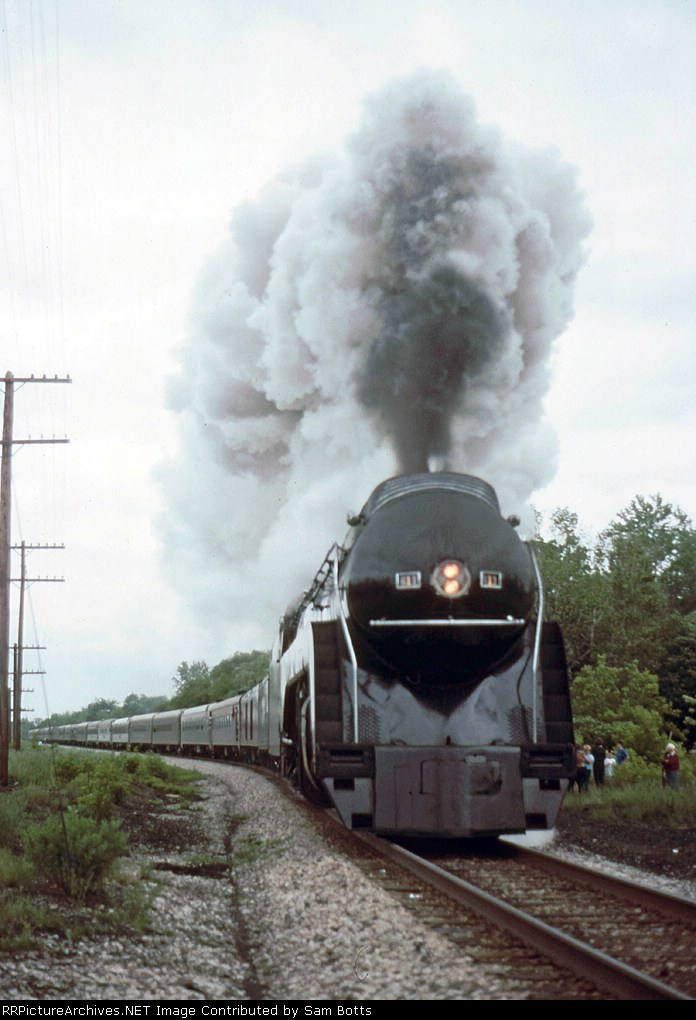Somebody once described the 1988 convention as "I spent a year in Jersey one week", which is a pretty good summary.
The event basically fell apart almost immediately, before it even started. They had planned 101 events for the 10-day event. Slow ticket sales for some trips led to four being canceled before the event even started (2 steam trips to Jim Thorpe and Reading, 2 diesel trips to the "Chemical Coast" and Long Island). Because of the sheer amount of trips, there were lots of scheduling conflicts but people weren't notified to the schedules in the flyers, so they often booked trips that conflicted with each other on the time table and then didn't realize it until they arrived. As trips ran late or were rescheduled, the conflicts got even worse. The sheer amount of events also spread the convention volunteers far too thin and had them going in a dozen different directions. They also tried using a computer system to order tickets, but this was 1988 so the computer system was not up to the task. The first problem was that they lagged about two weeks behind sending out trip confirmations to attendees. Thus many people arrived the first day and flooded the tiny room at the convention hotel where the computer person had set up to print out and correct tickets. and at one point there was a four hour wait on the registration line. What was worse were that some attendees found out that their first choice had been canceled, so they were in NJ with extra days to kill. Also, because it was slow to update, people were allowed to purchase far more first-class tickets than there were seats, so a lot of passengers got involuntary downgrades in service, and it distributed passengers unevenly, resulting in crammed cars in the front and rearward cars being completely empty. Several dealers that had multiple tables were assigned to tables in different parts of the same room, but cooler heads stepped in and shuffled the tables around. The speaker for the banquet dinner was the head of NJ Transit and he got up and mumbled something for a total of 5 minutes and then sat down, and that was his speech.
The weather was hot and humid, and due to tight scheduling, passenger cars rarely had their water tanks for the A/C system refilled, bathrooms weren't always emptied, the catered bag lunches were of unusually terrible quality and there was insufficient amounts for all passengers, and the excursions were referred to as "death marches" for their 8-12 hour lengths, all resulting in lots of very uncomfortable and unhappy passengers. Also, almost no photo runbys were planned, so people didn't get a chance to detrain and stretch their legs and photograph the train going by. The NRHS chapter blamed Conrail, but Conrail was not against such things at the time.
The very first trip was behind the Morristown & Erie's big red Alco Centuries and that trip went well. It was pretty much the only one that could be said of. It took passengers over to Conrail's yard in Selkirk where they got an excellent tour of the yard and shops.
The NYS&W's two circle trips to Campbell Hall via NYS&W and then back to NY via NJT ran into issues. The first one got held up at Maybrook yard due to crew change confusion, which then resulted in it getting into Passaic during the height of the New Jersey commuter rush, so it got stabbed in the hole for a few hours to wait for things to clear up before it got back. Then the second one was where their weeks-old GE Dash-8 punted a Euclid gravel truck and had to turn back early just past the old L&HR yard in Warwick with F45 #3636 in the lead.
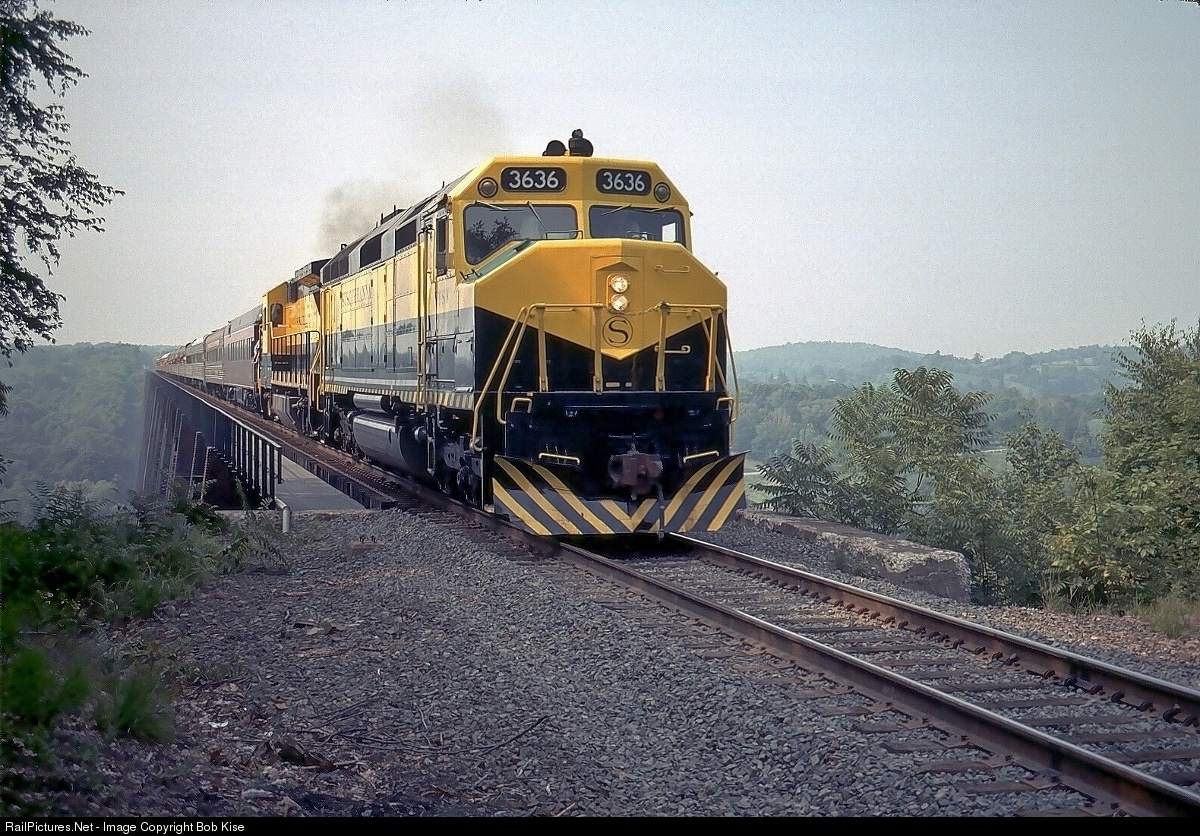
Nickel Plate #765 was supposed to be the guest of honor and was going to be run light in from Fort Wayne. Fans were excited to photograph it running in, but it ended up getting stranded in Binghamton, NY with a tender load of bad coal. It showed up on the 8th day, being towed in behind Conrail SDs. Upon arrival at NJ, the #765 crew was shown the water hose they were supposed to fill the tender with: a 5/8" water hose. To put that in perspective, the usual method of watering the cars in those days was a 2 1/2" fire hose from a pumper or a hydrant to a 3-way splitter. Three inch-and-a-half lines fed from the splitter and were used to water the cars. If they had a week between trips, the garden hose would have done the trick. Maybe.
The first successful high-speed steam runby happened on the 8th! day of the convention during a #765 trip to Port Jervis. This trip had been advertised and sold as steam-powered in both directions, but ended up being steam-powered on the outbound journey only. There were no turning facilities at Port Jervis, so the M&E Alcos coupled to the cars and brought the train back east on the return and the Berkshire ended up getting towed back to NJ by NJT diesels.
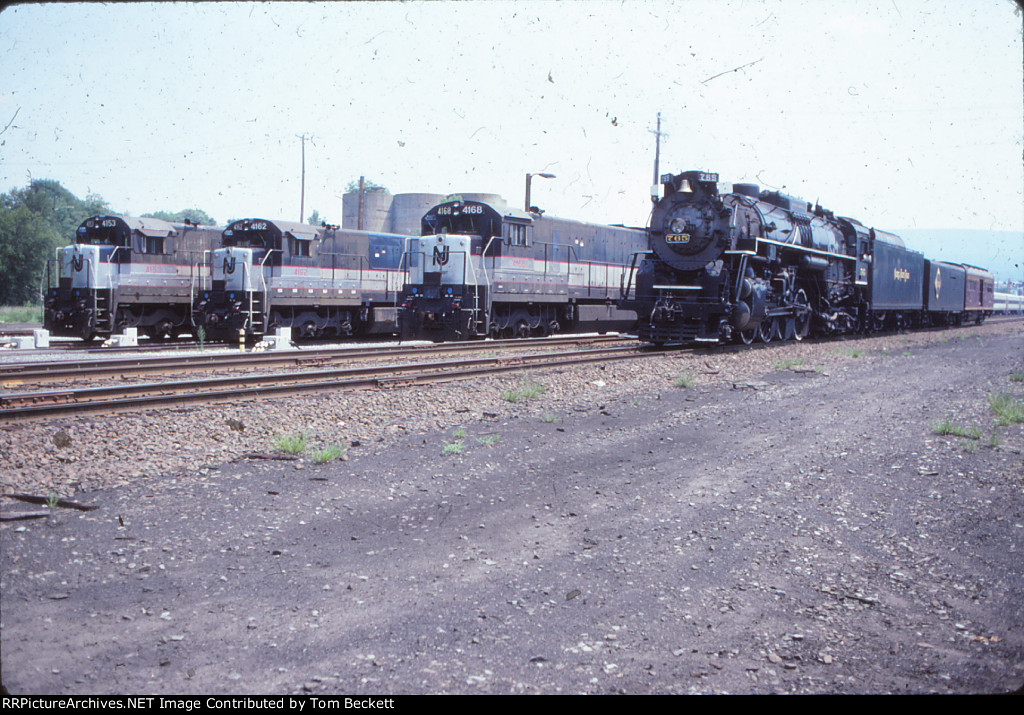
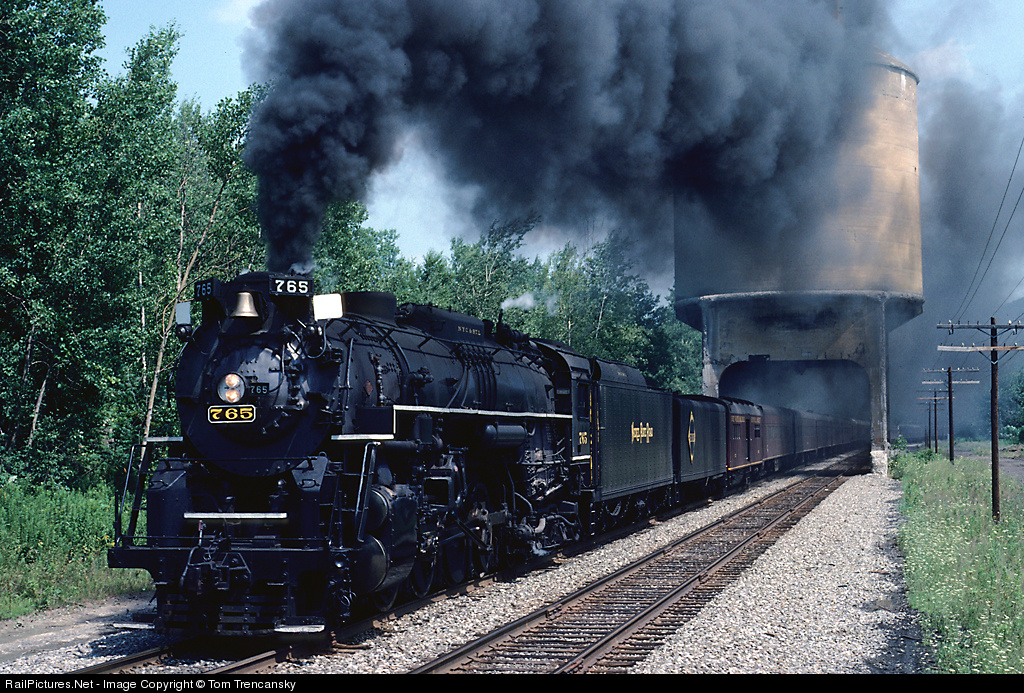
The final day of the convention involved a #765 trip to Harrisburg from Bound Brook, NJ via Allentown. This was a 440-mile round trip at a Conrail-imposed 40mph speed limit (Conrail's steam speed limit may have had something to do with when GTW #4070 disassembled it's running gear on Horseshoe Curve in 1977 and then the train went into emergency and split into three parts due to the rolling junkyard of coaches). Do the math, and then add in 4 hours for servicing stops, and that's an ugly schedule. The #765 crew repeatedly warned the convention planning staff that that was way too long a trip and repeatedly tried to talk them out of it, but their advice fell on deaf ears.
This trip was designed to be a connection to the westbound Amtrak Broadway Limited for those convention attendees returning home via Amtrak. But it was never communicated to Conrail by convention staff that they needed #765 towed from where it finished the night before to Bound Brook, so Conrail just left it where it was. Everyone got ready to go to Harrisburg the next day, but the engine was nowhere to be found. Conrail eventually dispatched a crew to tow it to Bound Brook but the train left hours late and only got and later as it progressed, as it tripped every hotbox detector along the way. It got so far behind schedule that the the trip was terminated in Reading instead. Unfortunately this stranded about 25 people who were counting on getting to Harrisburg before the Broadway's departure time. Apparently one chapter member shelled out $500 of his own money for 6 taxis to get those passengers to Harrisburg. Cutting short the trip also presented a pricing issue, as this trip was sold at a higher price due to its Harrisburg destination, but in the end it mirrored a previous #765 trip to Reading. People felt short-changed as this trip via Allentown cost more than the previous Reading trip which took a longer and more scenic route to Reading via Philly. This trip has come to be referred to as the "Readingsburg Trip."

The general consensus was the events which were hosted primarily by the railroads (items like NJT's Meadowlands Shop tour or Conrail's Selkirk tour, NJT and PATH offering inexpensive day passes to tour their entire system, the cross-honoring of passes between the commuter operations, etc) were flawless, while those events coordinated by the local chapters were disasters. The actions of NJT, PATH, LIRR, Reading Blue Mountain & Northern (they were running trips out of Reading and Temple behind #2102 and #425 and providing areas to service #765), Conrail, M&E and NYS&W were what held things together, while the rail buffs unfortunately came off as a pack of bumbling idiots. It also did serious damage to future attempts at hosting events in that area. Ross Rowland attempted to run C&O #614 out of Port Jervis a couple years later on the NJT and said that the response from NJT members who remembered '88 was a violent and vehement "NO!" until he convinced them he had his E36 M3 together. Conrail also became very reluctant to operating steam excursions.

















